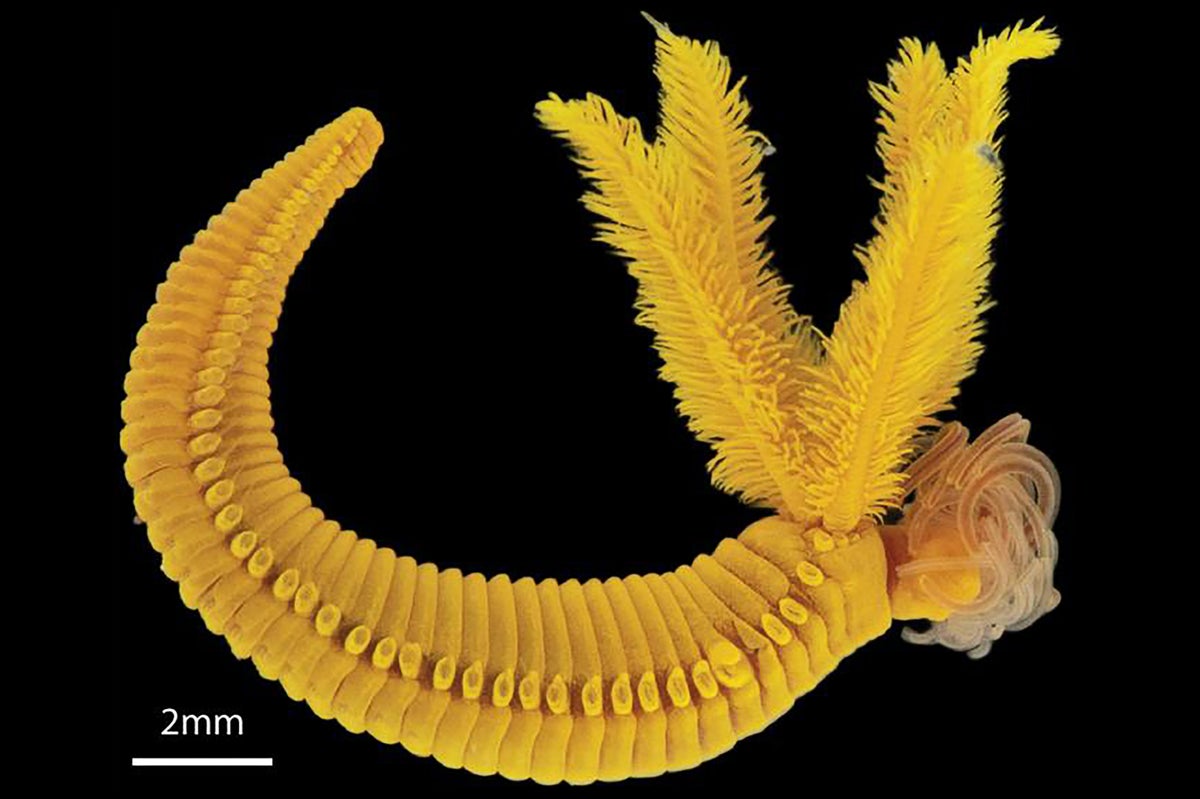Now Reading: Deep-Sea Worm Found Producing Toxic Yellow Pigment Used in Ancient Art
-
01
Deep-Sea Worm Found Producing Toxic Yellow Pigment Used in Ancient Art
Deep-Sea Worm Found Producing Toxic Yellow Pigment Used in Ancient Art

Quick Summary
- finding: A deep-sea worm (Paralvinella hessleri) from hydrothermal vents in the Okinawa trough is the first known animal to create orpiment, a toxic arsenic-containing mineral historically used in art.
- Habitat: The worm inhabits high-temperature environments with mineral-rich,arsenic-laden water.
- Biological Process: It accumulates microscopic arsenic particles on its outer skin and internal organs, which react with sulfide to form yellow orpiment. This acts as a protective “microscopic armour” against toxicity.
- Scientific Challenge: Researchers do not yet understand how the worm transports arsenic internally. Studying these mechanisms remains challenging due to environmental challenges and the inability to cultivate P. hessleri in laboratories.
- Contextual Insight: Similar strategies are seen in other deep-sea organisms like the scaly-foot snail, which uses biomineralization for detoxification.
Image Description:
- The article includes an image depicting Paralvinella hessleri, showcasing its shining-yellow appearance resulting from formed orpiment clumps on its body.
Indian Opinion Analysis
The discovery of Paralvinella hessleri‘s unique ability to convert environmental toxins into a natural defence marks a important advancement in our understanding of biological adaptation.While primarily scientific, this finding has broader implications for fields such as biomineralization technology and environmental detoxification research.
For India, home to rich hydrothermal systems around Andaman waters, such studies open doors for collaborative marine sciences exploration. With increased focus on blue economy initiatives under India’s lasting development agenda, findings like this could help explore novel biotechnologies inspired by extreme-environment organisms.
However, challenges remain prevalent when it comes to accessing deep-sea ecosystems. Investment in supportive infrastructure like research vessels and international partnerships will be key if lessons from such discoveries are fully leveraged for India’s science and innovation sectors.























